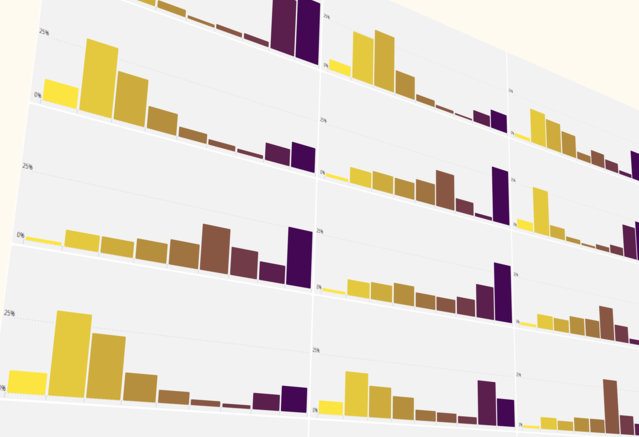Foreigners arriving in Switzerland more likely to be highly skilled

The demographics of Switzerland’s immigrant workforce are changing; unlike during the post-war decades, most new arrivals today are university educated. Swissinfo.ch takes a look at the stats.
As in most developed countries, immigrants in Switzerland are overrepresented in unskilled and low paid jobs. In some sectors of the economy which largely depend on immigrants – construction, plasterers, cleaning or domestic jobs or unskilled industry services – the proportion of immigrants can be higher than 70% of workers.
At the other end of the spectrum, people born outside of Switzerland represent less than 15% of the workforce in sectors like farming, early childhood and primary school educators (to mention only the main occupations). The technical or related occupations of the tertiary sector, as well as the public service, are also characterised by a lower representation of immigrant workers.
The proportion of skilled immigrants is also growing constantly. That is especially true since 2002 when the accord with the European Union for the free movement of people came into force. During the 1980s, less than 20% of migrants held a tertiary degree. A majority had completed primary school at most. Today, this trend has been inverted: most of the new migrants who arrive in Switzerland have a university degree to their name. Only 20% of them are unskilled workers.
The change can be explained by the increased need for highly trained staff at the heart of the economy. Most of the qualified or very qualified jobs are particularly important and compared with other European countries, Switzerland leads the field in this area.
However, when it comes to migrants’ country of origin, there are clear differences. Immigrants from France, Germany and certain other EU countries of the OECD are overrepresented in managerial and executive positions, as well as in intellectual and scientific professions. These highly qualified workers began to arrive in Switzerland in significant numbers during the 2000s.
That Italians, Portuguese, Spanish and Turks today still mostly work in the least skilled professions can be explained by their migratory history. During the post-war boom of the 1960s and 1970s Switzerland encouraged the mass migration of non-skilled workers from Italy and Spain to help build its infrastructure and work it in its factories. The Portuguese followed in the late 1970s.
But equally today, these immigrant nationalities are also characterised by new arrivals who are highly educated, something which is contributing to drastically changing the face of professional immigration in Switzerland.
Adapted from French by Sophie Douez

In compliance with the JTI standards
More: SWI swissinfo.ch certified by the Journalism Trust Initiative













You can find an overview of ongoing debates with our journalists here . Please join us!
If you want to start a conversation about a topic raised in this article or want to report factual errors, email us at english@swissinfo.ch.